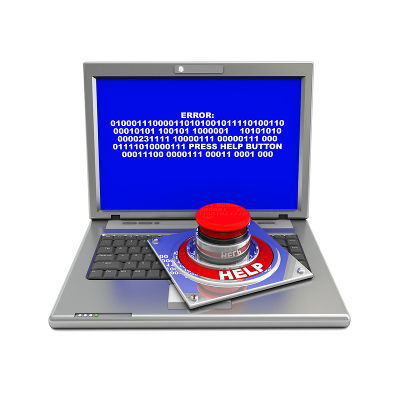It’s quite possibly the most dreaded scenario in computing: the Blue Screen of Death. First you stare at in disbelief. What is this? Is it really happening to me? Panic can soon set in. Is this the end? What about my data? The good news is that though it can be very serious, the Blue Screen of Death, or BSoD for short, isn’t necessarily fatal.
The BSOD is what happens when Windows experiences an error critical enough to require a restart. This is what makes it different from a simple application crash, which will usually only require you to restart the application, not the entire computer. It occurs if your computer encounters a hardware or device driver problem, or is infected with a virus. This creates what is known as a STOP error, which causes Windows to crash.
The Blue Screen of Death can result from various genuine problems, but be alert to the possibility that it’s a fake and a scam. An easy way to spot the difference between real and fraudulent BSOD messages is to check for a phone number. If one is provided, someone is trying to scam you. Microsoft has never provided contact information on their Blue Screen message, only the error code and instructions on how to reboot.
If you’re unlucky enough to be staring at a real Blue Screen of Death, keep calm and follow the standard procedures for recovery. The screen message should contain an error code, and the URL of Microsoft’s advice and troubleshooting page. The steps are pretty straightforward. Before you start, cast your mind back to what you were doing just before the crash. Were you installing new hardware, drivers or other software, or upgrading your system?
1. Restart Your Computer – Reboot your system in Safe Mode. This loads up only essential software and drivers, and allows you to start diagnosing the problem.
2. Run System Restore – Sometimes restoring the system will resolve the issue speedily. Pick a restore point that relates to when the system was definitely functioning normally. If this eliminates the problem, it suggests that you’re probably dealing with a software problem, not something more serious, like disk corruption. This doesn’t necessarily mean that everything is back to normal, but if it was a one-off glitch you’re ready to roll again.
3. Scan For Viruses and Malware – A good security program should pick up an infection of your computer upfront, but some can still slip through. A fresh scan will pinpoint and eliminate threats to your computer and could identify the source of the problem straightaway.
4. Reinstall Windows – This should be your last-ditch option, as it will completely wipe your existing operating system and replace it with a new installation of Windows. If this doesn’t fix the BSOD then your problem is most likely hardware-related.
The Blue Screen of Death is potentially very serious and there are scenarios in which you should probably ask for expert help. You’ll be forced to do this anyway if your computer won’t reboot at all. If measures like System Restore don’t help, or problems recur, professionals may be able to pinpoint the problem in your software. Because reinstalling Windows is risky, you may not want to do it yourself. If the problem turns out to be your hardware, IT professionals can help retrieve data from a faulty system or hard drive and advise on repairs or replacement.
If you’d rather not have to deal with a BSOD, Quikteks can help. By managing your IT, we can predict and prevent issues that would otherwise impact your productivity. To find out more, give us a call at (973) 882-4644.

